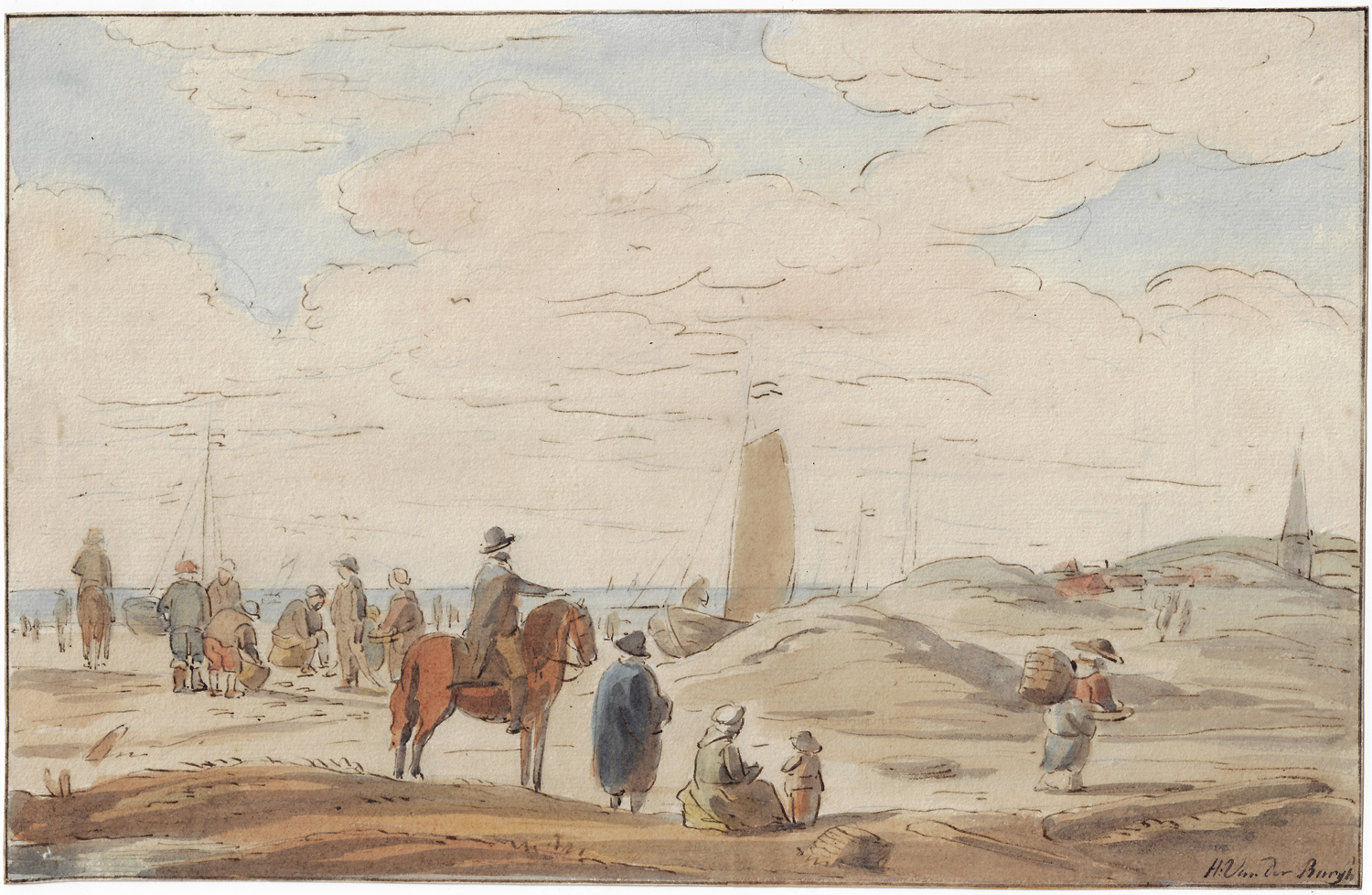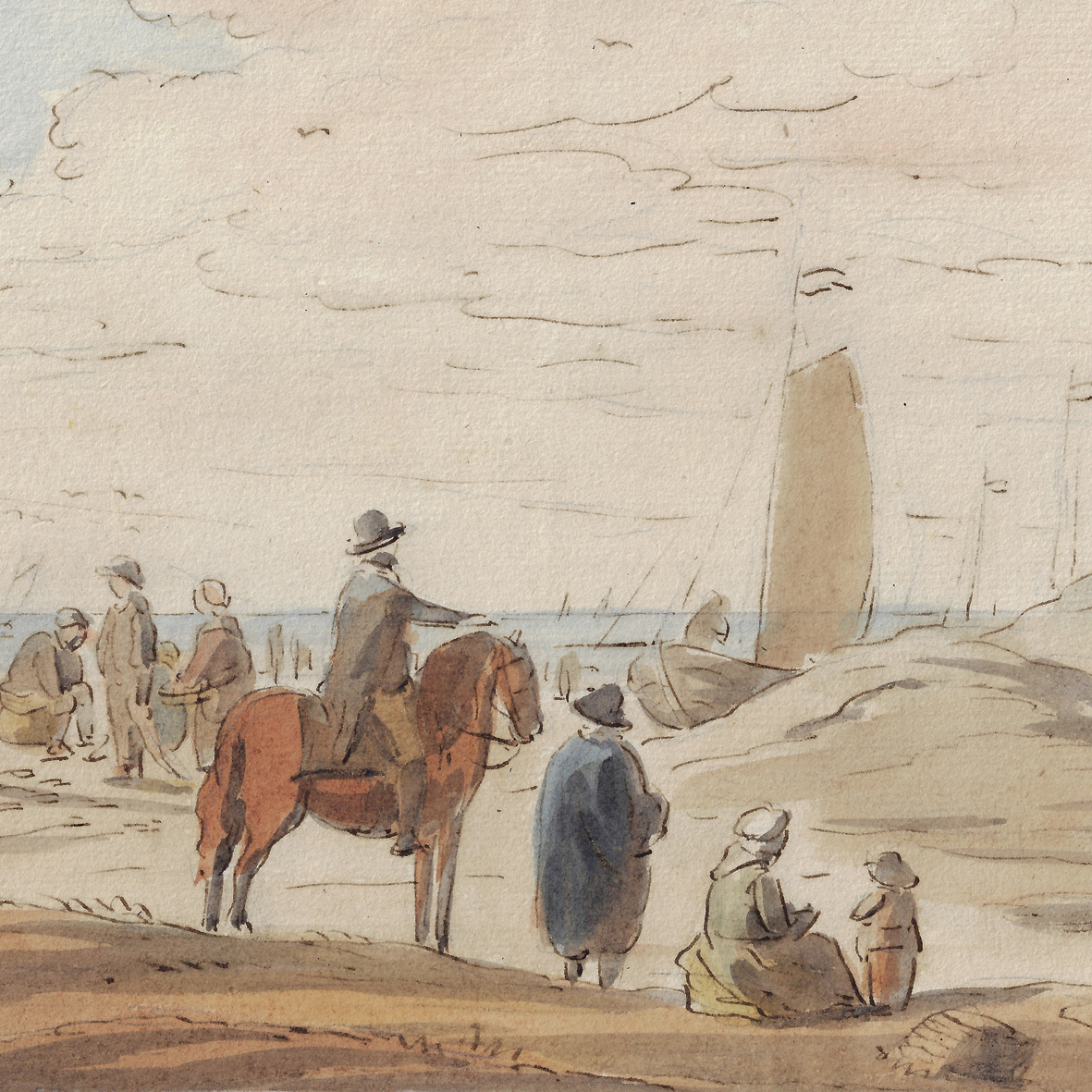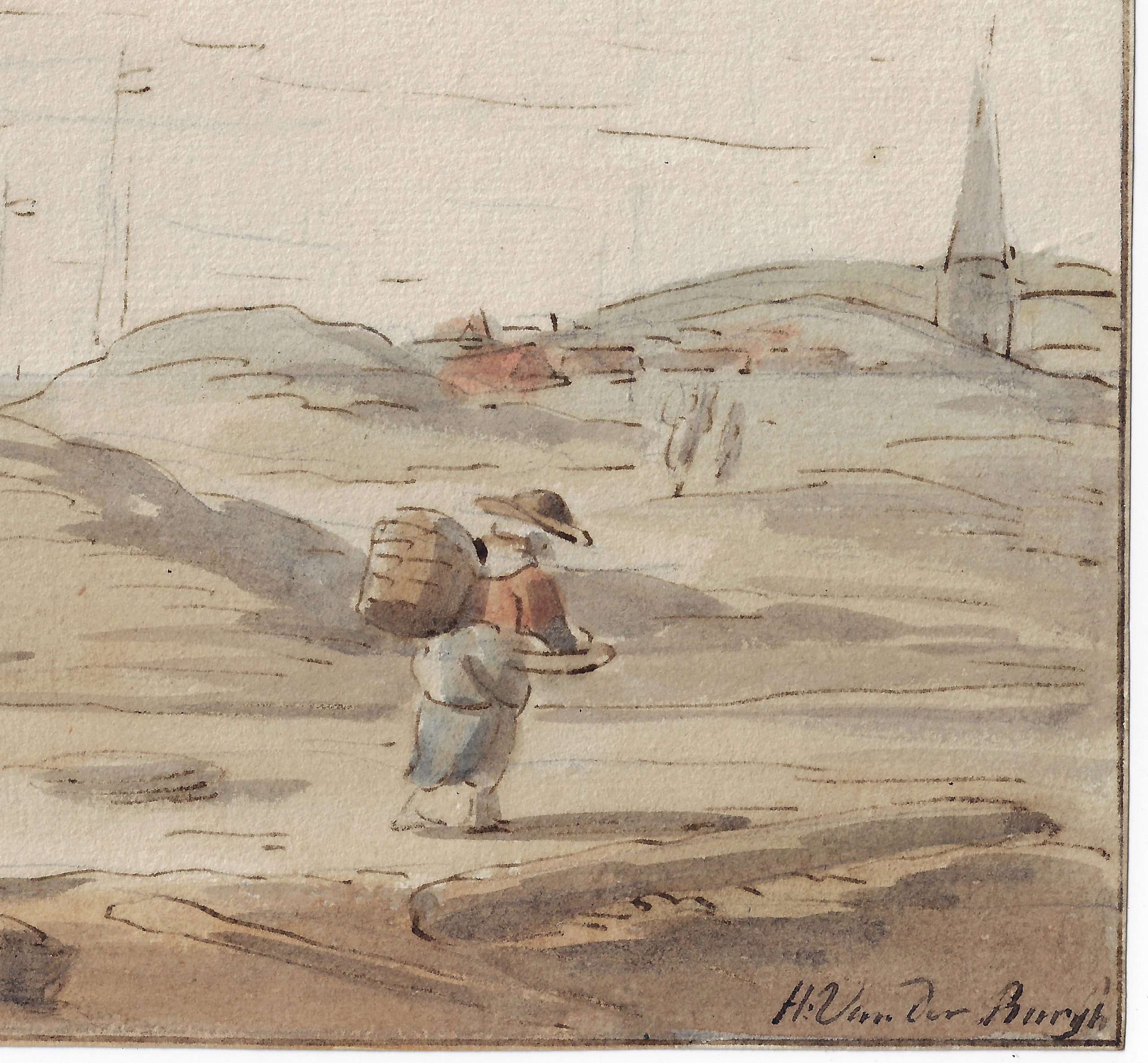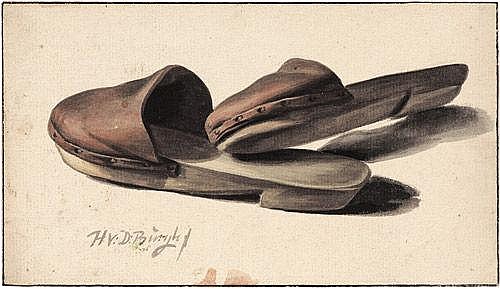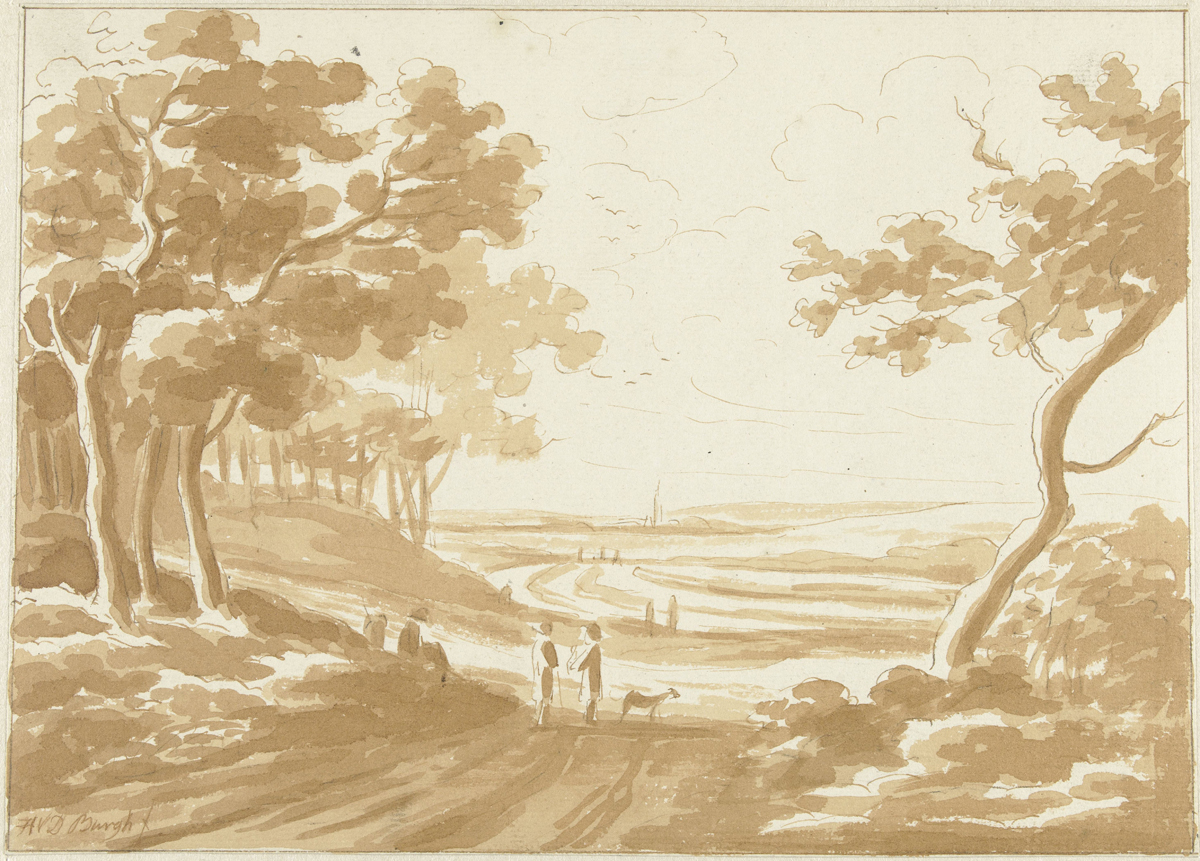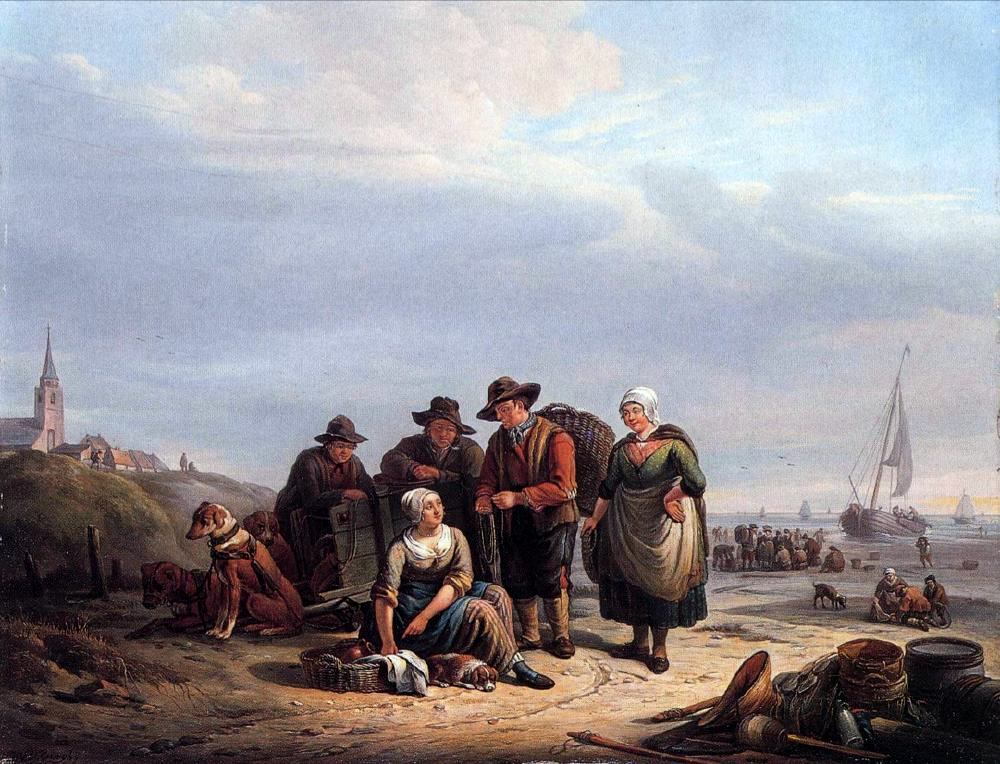HENDRIK VAN DER BURGH (The Hague 1769 – 1858 The Hague)
Hendrik van der Burgh (The Hague 1769 – 1858 The Hague)
Fishermen and other figures on the beach at Scheveningen
Pencil, pen and brown ink, watercolour, brown ink framing lines, 218 x 338 mm (8.6 x 13.3 inch)
Signed ‘H. Van der Burgh’ (lower right)
Provenance
Private collection, Germany
***
Hendrik van der Burgh was born in The Hague in 1769 and attended the drawing academy in his home town, where he was listed as a student in in 1789 and 1791.1 He was mostly active as a painter of interiors and genre scenes, influenced by the masters of the Golden Age. Information on Van den Burgh was included in the influential reference work Geschiedenis der Vaderlandsche Schilderkunst, assembled by Roeland van Eynden and Adriaan van der Willigen, published from from 1816 to 1840.2 Van der Burgh was a contributor to many of the annual exhibitions of works of living masters, held in The Hague, Haarlem and Amsterdam during the 1820s and 1830s.
Although his paintings were somewhat conventional, doubtless because they were produced to satisfy the wishes of his conservative clientele, Van der Burgh’s drawings are more original. Only a small number of drawings is currently known, including an intimate study of a pair of house shoes (fig.)3 and a study of a farmhouse courtyard,4 both of which illustrate Van der Burgh’s powers of observation, including of themes and subjects that were frequently considered too modest or humble to be depicted. It is interesting to note that the artist did however frequently apply his signature on drawings such as these, which indicates that he did indeed consider them as finished works of art, rather than as studies for his own education, and that they might have been collected by connoisseurs and collectors.
Our spontaneously and vigorously drawn sheet is the largest sheet currently known by Van den Burgh and was certainly made as a work of art intended for sale, as is indicated by its impressive size, the use of colour, and the presence of the artist’s signature. It can be compared to Van der Burgh’s Landscape with figures walking on a path in the Rijksprentenkabinet (fig.).5 The drawing represents the beach at Scheveningen, close to The Hague – the spire of the Oude Kerk and the fishermen’s cottages of the village can be seen among the dunes at the right. Van der Burgh produced a small number of paintings of the seaside village, including Fishermen at the beach of Scheveningen (fig.).6
1. For the artist, see the biography in Saur Allgemeines Künstlerlexikon: die bildenden Künstler aller Zeiten und Völker, Munich 1992- , vol. 15 (1997), pp. 211-212.
2. R. van Eynden and A. van der Wiligen, Geschiedenis der Vaderlandsche Schilderkunst, Haarlem 1816-1840, vol. III (1820), p. 354, vol. IV (1840), pp. 280-281.
3. Watercolour, 120 x 208 mm, signed ‘HV: D: Burgh f’, with Galerie Talabardon & Gautier, exhibited at the Salon du Dessin in Paris in 2015.
4. Watercolour, 193 x 170 mm, signed ‘HVD Burgh f’, inv. no. RP-T-1985-125.
5. Pen and brown ink, brown wash, 192 x 270 mm, signed ‘HVD Burgh f’, inv. no. RP-T-1932-16 (gift of A. Welcker).
6. Oil on panel, 41 x 52 cm; Christie’s, Amsterdam, 21 April 1994, lot 171, repr.
